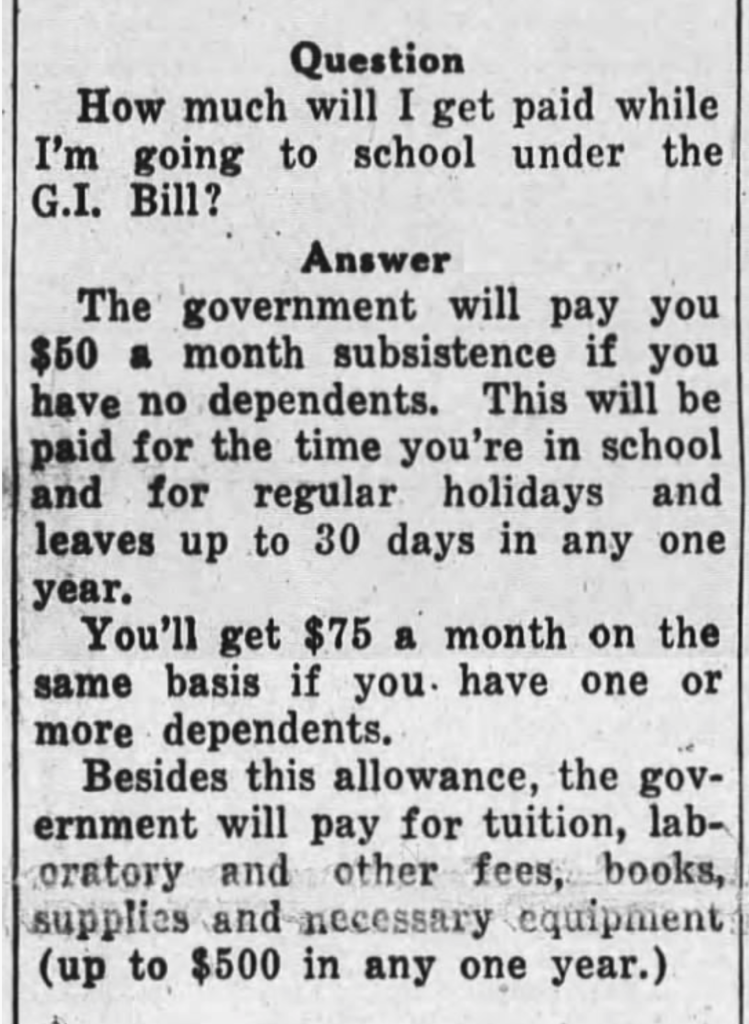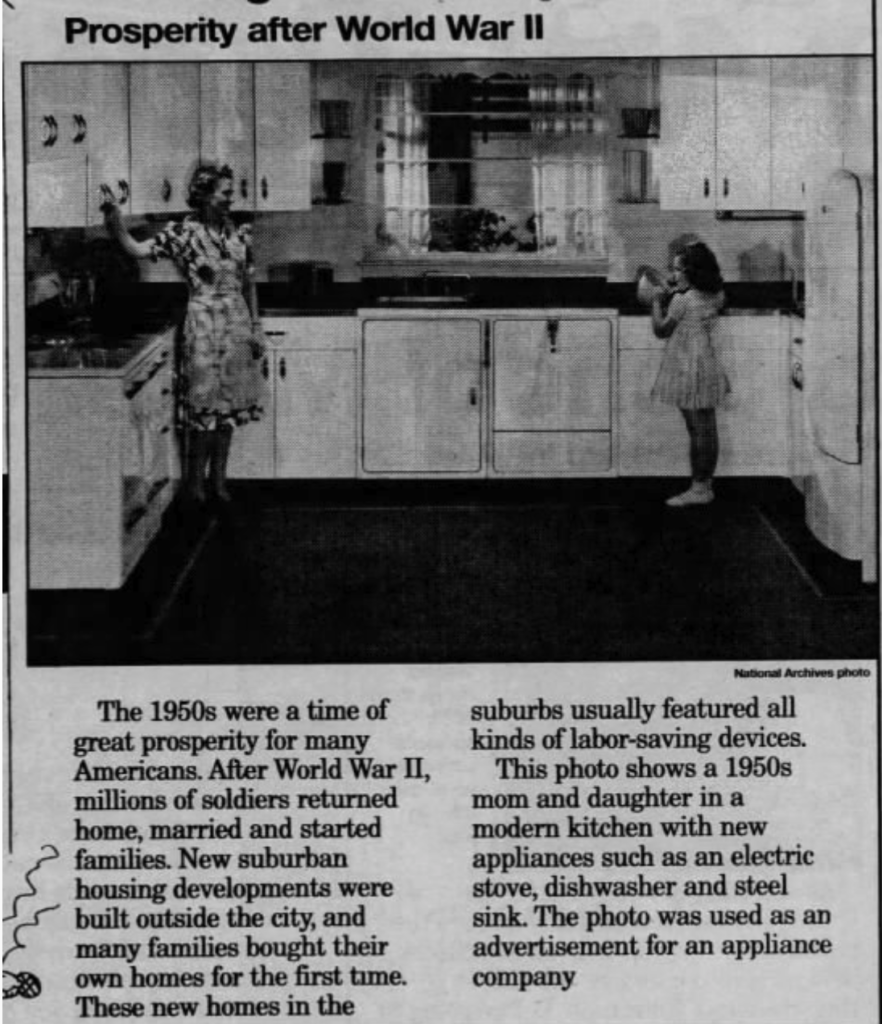The 1950 U.S. Census records have been released. Several states are already indexed and searchable on Ancestry®. Others will become available in the coming weeks and months. This historical snapshot of life in the United States in 1950 reveals the significant impact of landmark legislation signed into law in 1944 – the Servicemen’s Readjustment Act, also known as the G.I. Bill. The bill created sweeping new benefits for millions of veterans returning home from WWII. Those benefits included money for education, job training, low-interest home loans, and unemployment benefits.
By the time the 1950 U.S. Census was enumerated, nearly 8 million veterans had taken advantage of benefits offered through the G.I. Bill. One landmark provision of the bill was funding for education. Before the war, a college education was out of reach for the average American. The G.I. Bill, however, flung the doors to universities and vocational schools wide open with benefits that covered tuition, books, supplies, and offered a living stipend. A college education was now within reach, and many veterans took advantage of the opportunity. Educational funding had the added benefit of preventing too many veterans from flooding the job market all at once. In 1947, nearly half of those admitted to college were veterans, and between 1940-1950, the number of college and university degrees earned doubled. You will see this reflected in the 1950 Census where every fifth person answered supplemental questions related to education.
Another popular benefit offered through the G.I. Bill was low-interest home loans. The VA Home Loan benefit granted 4.3 million low-interest, zero down payment home loans between 1945-1955. Veterans starting families snapped up the home loans and moved to the suburbs. The 1950 Census reveals many new neighborhoods and mass-produced subdivisions all around the country as veterans became the largest single group of homeowners. The Census also asked if respondents lived in a house or on a farm, and a supplemental question asked if they lived in the same house a year ago. You can explore enumeration district maps for the 1950 Census here on Ancestry®.
The G.I. Bill led to a building boom that helped usher in an era of unprecedented prosperity and growth for the middle class. Homeownership cemented the stability of millions of veterans’ families, fueled job growth, and added substantially to personal income and consumer demand. WWII rations and shortages gave way to abundance and prosperity that shaped the country for decades. In the 1950 Census, a sample population was asked if they served in the U.S. Armed forces during WWI, WWII, or at any other time including present service. Respondents also declared how much money they earned and the source of those earnings.
Other benefits offered through the G.I. Bill included unemployment benefits, money to start a business, additional veterans hospitals, and veteran job counseling and employment services. The 1950 Census asked supplemental questions to a 3.5 percent sample of the population. These questions included what type of work they did, the kind of business they worked in, and what class of worker they were.
Explore the impact of the G.I. Bill on your family tree when you search the 1950 U.S. Census Records on Ancestry.com®. Search Newspapers.com™ today to learn more about the G.I. Bill.




